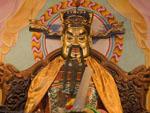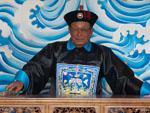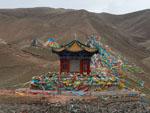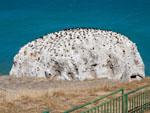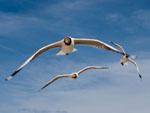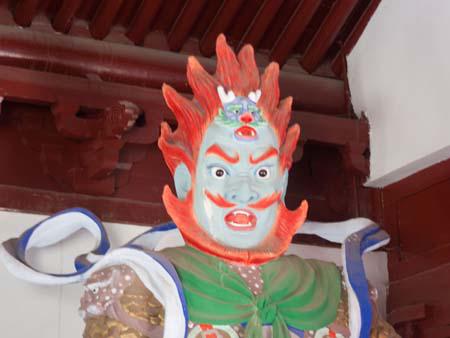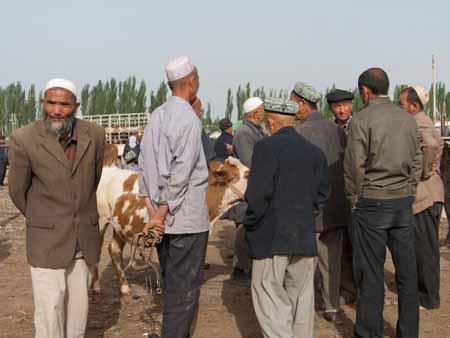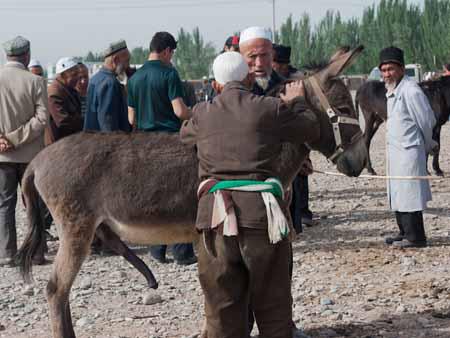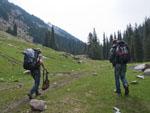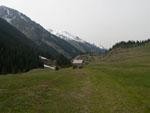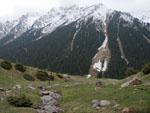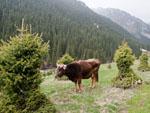Xining is located in the Qinghai province, a region on the north-eastern border of Tibet. Again we caught a train from Urumqi to Xining, this time though we had four people per room, but since we had the bottom bunks it wasn’t too bad.
thydzikgooglemap(http://sonyaandtravis.com/maps/urumqi-china-to-xining-china.xml)
We decided to spend some of our time in Qinghai exploring the outer areas, and I was drawn to the idea of visiting Qinghai Hu (Lake Kokonor) and in particular Niao Dao (or Bird Island), a breeding ground for wild geese, gulls and other birds. With an extra few days before our train to Lhasa, we decided to arrange a trip to Qinghai. I called China Travel Service (CTS) Xining and was fortunate to get through to a helpful English speaking man who helped us join a day tour (yes, another one!). It was to cost 120 Yuan for the over three-hundred kilometre trip to Qinghai Hu and included a visit to Niao Dao, tickets were extra.
The following morning our transport picked us up bright and early at 7am. Our group was a much younger group, and once again a young English speaking Chinese guy took us under his wing and translated where he could.
Dang’r, a traditional Chinese town
Our first stop was Dang’r, which was an old traditional Chinese town about seventy kilometres from Xining. The old city consisted of a Children’s school, government with court, and a Temple of Confucius. Dang’r is said to have been an important cultural city along the Tang-Tibet and Silk Road routes.
thydzikgooglemap(http://sonyaandtravis.com/maps/xining-china-dangr-traditional-chinese-town.xml,s)
Zan Pu Linka (Royal Garden)
The second stop was a Tibetan temple (Zan Pu Linka, meaning Royal Garden) which had some beautiful murals. From what I could gather, the gist of the temple’s purpose was to unite Han Chinese and Tibetan culture.
Yaks and Pagodas
After the temple, we witnessed some amazing scenery. Snow capped mountains, against a clear blue sky, bright green grasslands scattered with yaks, goats and sheep. On the way to Qinghai Hu we drove through an elevated land which had a few picturesque pagodas located atop some hills (the twin pagodas of Sun Moon Pass). We stopped for some photos and a came across a Tibetan lady with a baby yak. She thrusted it into my arms and the next thing I knew we were paying 5 Yuan for photos with it. It was a simply adorable creature though!
thydzikgooglemap(http://sonyaandtravis.com/maps/xining-china-yaks-and-pagodas.xml,s)
Niao Dao (Bird Island)
Finally after many hours of travelling we reached Niao Dao. Also packed with Chinese tourists, we spent some time visiting the various attractions on the island. There were many birds as it is breeding season. Surprisingly one of the highlights were the hovering gulls, I’d never seen anything like it!
thydzikgooglemap(http://sonyaandtravis.com/maps/xining-china-niao-dao-bird-island.xml,s)
All in all it was a good day and restored our faith in day tours!










































































































